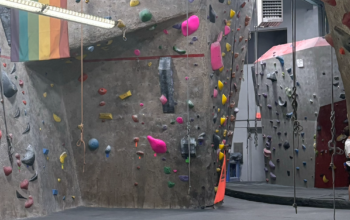City planners and community members met in an open forum at the High Noon Saloon last Tuesday to discuss how to build healthy neighborhoods in Madison.
The forum was the latest in the Cap Times Talks discussion series, a two-year-old program hosting open discussions of community issues, diversity and development in Madison. The five-person panel represented backgrounds from city planning to urban, community-focused architecture, and took questions both from moderator Abigail Becker as well as audience members.
Over the course of the hour-long discussion, the panel identified several key factors in developing healthy neighborhoods, including accessible community centers, design beyond a neighborhood level and utilizing diverse viewpoints to develop plans for the future.
Panelist Heather Stouder, director of Madison's Planning Division, acknowledged past mistakes of city planning, and stressed the importance of creating neighborhoods that provide options in housing, recreation and transportation to their residents.
"The aspects of strong, vibrant neighborhoods are really different based on your perspective," Stouder said. "That's one of the key things to strive for as a professional planner, is trying our best to create spaces for choice."
Both Stouder and fellow panelist Sheray Wallace, a Meadowood neighborhood resident, emphasized the importance of community gathering spaces in neighborhoods. Wallace identified libraries and community centers as key institutions, while Stouder added that informal establishments, such as cafes and barber shops, could serve the same purpose.
Panelist Michael Ford, an architectural technology instructor at Madison College, advocated for greater diversity in occupation and background when gathering input for community design.
"Often times, the professionals that are planning communities are not reflective of the communities that they're planning in," Ford said. "To understand what a successful community is, we need a cross-disciplinary conversation. It's not just bringing architects and planners to the table."
Tariq Saqqaf, Madison's Neighborhood Resource Coordinator, acknowledged the city's responsibility for greater inclusion in planning. Saqqaf's Neighborhood Resource Team program works toward this goal, appointing city workers to specific neighborhoods in order to help create tailored agendas for community improvement.
The panel was followed by a discussion session with the Imagine Madison project, a public project seeking community input on city development. To provide input on what you want Madison to look like in 10 years, click here.




